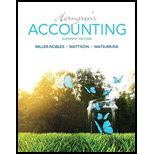
Concept explainers
Introduction:
Payback Period: Payback period is the period in which the project recovers its initial cost of the investment. It can be calculated by dividing the initial investment by the annual
Hence, smaller the payback period better it is. A project with the smaller payback period is chosen first in the capital rationing process.
NPV:
A project should be accepted if it has a positive NPV. Hence, higher the NPV better it is. A project with the Higher NPV is chosen first in the capital rationing process.
IRR:
A project should be accepted if it has an IRR greater than the required rate of return. Hence, higher the IRR better it is. A project with the Higher IRR is chosen first in the capital rationing process.
Profitability Index: Profitability Index is similar to the NPV method to evaluate a project. It calculates the ratio between the present value cash inflow and present value of
A project should be accepted if it has a PI more than or equal to 1. Hence, higher the NPV better it is. A project with the Higher NPV is chosen first in the capital rationing process.
To determine: The acceptable projects and their ranking
Want to see the full answer?
Check out a sample textbook solution
Chapter 26 Solutions
Horngren's Accounting (11th Edition)
- HELParrow_forwardFrazer Corporation owns 70 percent of Messer Company's stock. In the 20X9 consolidated income statement, the noncontrolling interest was assigned $18,000 of income. There was no differential in the acquisition. Required: What amount of net income did Messer Company report for 20X9?arrow_forwardAnsarrow_forward
- Could you help me solve this financial accounting question using appropriate calculation techniques?arrow_forwardWhat is the cost per equivalent unit for direct materials for Marcharrow_forwardCan you help me solve this general accounting question using the correct accounting procedures?arrow_forward

 AccountingAccountingISBN:9781337272094Author:WARREN, Carl S., Reeve, James M., Duchac, Jonathan E.Publisher:Cengage Learning,
AccountingAccountingISBN:9781337272094Author:WARREN, Carl S., Reeve, James M., Duchac, Jonathan E.Publisher:Cengage Learning, Accounting Information SystemsAccountingISBN:9781337619202Author:Hall, James A.Publisher:Cengage Learning,
Accounting Information SystemsAccountingISBN:9781337619202Author:Hall, James A.Publisher:Cengage Learning, Horngren's Cost Accounting: A Managerial Emphasis...AccountingISBN:9780134475585Author:Srikant M. Datar, Madhav V. RajanPublisher:PEARSON
Horngren's Cost Accounting: A Managerial Emphasis...AccountingISBN:9780134475585Author:Srikant M. Datar, Madhav V. RajanPublisher:PEARSON Intermediate AccountingAccountingISBN:9781259722660Author:J. David Spiceland, Mark W. Nelson, Wayne M ThomasPublisher:McGraw-Hill Education
Intermediate AccountingAccountingISBN:9781259722660Author:J. David Spiceland, Mark W. Nelson, Wayne M ThomasPublisher:McGraw-Hill Education Financial and Managerial AccountingAccountingISBN:9781259726705Author:John J Wild, Ken W. Shaw, Barbara Chiappetta Fundamental Accounting PrinciplesPublisher:McGraw-Hill Education
Financial and Managerial AccountingAccountingISBN:9781259726705Author:John J Wild, Ken W. Shaw, Barbara Chiappetta Fundamental Accounting PrinciplesPublisher:McGraw-Hill Education





